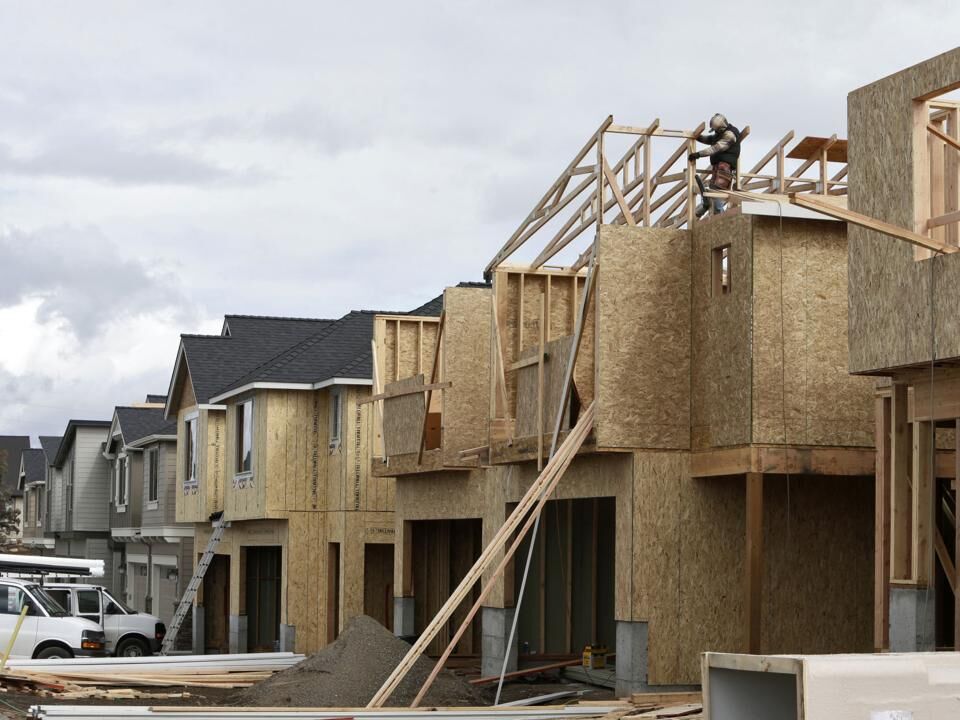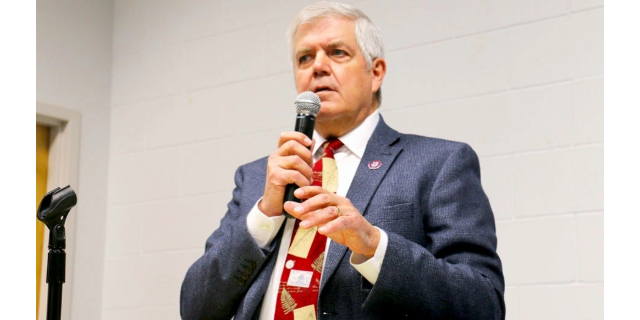Lawmakers unveil energy-efficiency measures for buildings
Published 10:05 am Tuesday, March 14, 2023

- Construction continues on homes in Northeast Bend.
Two advocates say that Oregon’s newest attempt to rein in heat-trapping greenhouse gases will result not only in lower carbon emissions but more energy-efficient homes and buildings.
They spoke, along with the two Democratic legislators who led a task force last year, as the Senate Energy and Environment Committee prepared to hear comments about the four-bill package this week. The bills in brief:
• Senate Bill 868 would ensure access by low-income families and others to adequate heating and cooling for homes through installation of heat pumps and other energy-efficiency measures. The bill aims for Oregon to take advantage of rebates and incentives from the federal government, which has $370 billion available over 10 years for climate-change adaptation measures under a 2022 law.
• Senate Bill 869 would set energy-efficiency requirements for new construction, including potential use of alternative building materials such as cross-laminated timber. The bill would go beyond weatherization.
• Senate Bill 870 would set performance standards and offer financial incentives for commercial buildings.
• Senate Bill 871 would set similar performance standards for state buildings.
What advocates say
Joel Iboa is executive director of the Oregon Just Transition Alliance, which represents people in areas disproportionately affected by pollution – they often can find no place else – and live in housing that lacks adequate heating and cooling to withstand more frequent cold and hot spells resulting from climate change. Among the recent episodes in Oregon: the 2020 Labor Day wildfires, and the 2021 ice siege and heat dome, the latter resulting in about 100 deaths.
“If we have learned nothing else from the past three years… resilience starts at home. Our homes are our first line of defense against climate disasters,” Iboa told reporters at a briefing arranged by legislators.
“We believe we can and must make our communities safer and more resilient by transitioning to clean energy by making upgrades to homes and buildings. We cannot afford not to.”
According to an inventory compiled by the Oregon Department of Environmental Quality, the residential and commercial sector accounted for 34% of statewide greenhouse gas emissions in 2021, second only to the 35% generated by the transportation sector.
The Environmental Quality Commission, DEQ’s policy-making arm, adopted a plan in December 2021 to deal with transportation fuels, though the plan is being challenged in the Oregon Court of Appeals on grounds that only the Legislature can authorize such a plan. (The commission acted on an executive order by then-Gov. Kate Brown in March 2020, after Republican walkouts thwarted legislative votes on a broader climate-change plan.)
“Now we have the blueprint for how to rein in that pollution and improve homes and buildings to better withstand those increasing climate impacts,” said Meredith Connolly, Oregon director for Climate Solutions.
“This package means that in addition to achieving our climate goals, we can advance affordability, equity and safety in every community.”
Oregon’s climate-change target is a 90% reduction of greenhouse gases from current levels (2017-21) by 2050. But according to the DEQ inventory, Oregon emissions as measured in 2021 were up 7% from 1990 levels.
Task force created
The Legislature set up the 27-member task force last year after it converted a bill that would have adopted energy-efficiency standards outright. It completed its work in December.
Its leaders were Rep. Pam Marsh, a Democrat from Ashland who is chair of the House Energy and Environment Committee, and Sen. Kate Lieber, a Democrat from Beaverton who is now the Senate majority leader.
Marsh represents a district where the 2020 Almeda fire in Talent and Phoenix destroyed about 2,500 of the estimated 4,000 homes lost statewide in the Labor Day fires. Southern Oregon, historically drier than the north, also remains in a drought. Much of the lost housing was for low-income people who lacked other places to go.
“We know that climate change is happening and targets our most vulnerable populations,” Marsh said. “That is why this work is so important.”
Lieber said most of the deaths from the 2021 heat dome – which occurred just as the legislative session ended – were in Multnomah County where residents lacked access to cooling.
She said: “One of the things we wanted to make sure we addressed is that our homes are not only efficient, they are the first line of defense for the climate crisis we have before us.”
But virtually nothing about climate-change legislation is politically easy. Lawmakers did pass a bill in 2021 requiring Oregon’s largest utilities to obtain all their power from carbon-free sources by 2040. The bill was supported by the two utilities – Portland General Electric and Pacific Power – but got no Republican support.
“I think there is a lot of consensus on this,” Lieber said. “I can’t say there is not going to be any opposition. But my sincerest hope is that we are moving people to get on board.”
Marsh said: “As we constructed the legislation in our package, our intent was to fairly reflect the input we got from our 27 members.”
Goals in harmony
Gov. Tina Kotek has set an annual housing production target of 36,000, 80% greater than the annual average of 20,000 during the past five years. But Connolly said that incorporating energy-efficiency measures into homes and other buildings will save in the long run – and the state already is doing so now under executive orders previously issued by Gov. Brown.
“We know that even if there was a little more up-front cost, it actually made it cheaper to live in the home, more comfortable and more resilient. It paid for itself very quickly,” Connolly said. This package says, she added, “that we are going to continue on this energy-efficient path for the next decade.”
She said Oregon had been a leader in weatherization and energy conservation in the 1970s and 1980s, the resulting energy savings making it unnecessary to build a series of regional nuclear power plants in Washington state that were later dropped.
Iboa said lawmakers demonstrated during the past three years, going back to the onset of the coronavirus pandemic, that they have not forgotten about low-income households and people of color who are disproportionately affected by disease and weather extremes.
“This suite of bills in this package is a testament to the commitment by legislators to make sure that Oregonians are OK,” he said. “For us, this is our Magna Carta – this is must-pass legislation.”





